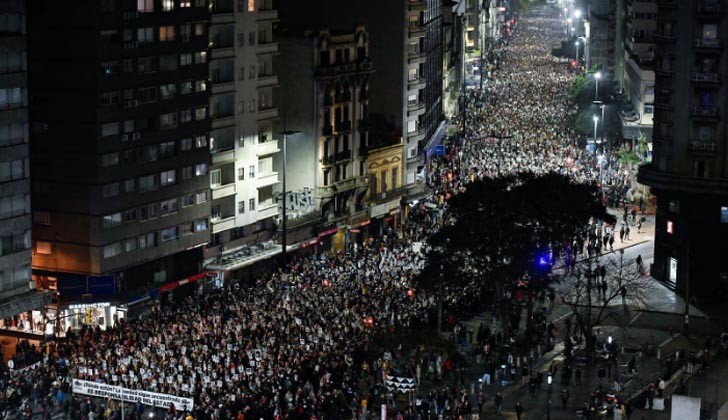the spokesman and Director of Strategy and Communication of the Presidency, Homer Figueroastated that the entry into commercial operation of the Estrella del Mar III floating plant, plus the contribution of 100 MW from Falcondo, 100 MW from Barrick, 50 MW from Sultana del Este, the reintegration into the system of the Haina TG plant with 85 MW and, in addition, the increase in the dispatch of hydroelectric generation by 200 MW, are allowing the normalization of the national electricity system.
The floating plant Estrella del Mar IIIwhich begins its commercial commissioning with a total investment of about $200 million dollars for its construction and installation, it is a 146MW power generation barge, exclusively using natural gas and with a configuration that includes two (2) 50MW gas turbines and a combined cycle, using a 46 MW steam turbine and that It is the most efficient and technically advanced power plant in the country.
It is also equipped with a battery system or BESS (for its acronym in English that stands for Battery Energy Storage System) which provides a better option in terms of efficiency, lower O&M cost and environmental performance to provide a safe base energy charge. .
This is added to the Estrella Del Mar II floating plantof 110 MW, installed 10 years ago and which is a dual fuel plant (it operates with both natural gas and fuel-oil) with a configuration of 6 17 MW engines and a combined cycle of about 10 MW.
You may be interested in: Isa Conde: “There are business sectors that are managed with spurious competitiveness”
The set of both plants and the complementary infrastructure for their operation represent a total investment of approximately US$350 million and offers a clear sign of confidence in the Dominican Republic.
Transcontinental Capital Corporation (Bermuda), Ltd. is a subsidiary of Seaboard Corporation, a Fortune 500 company that owns and operates several diversified businesses, including food processing, commodities and shipping. It has been operating for 32 years as a generator of electricity in the Dominican Republic.
Figueroa recalled that the president Abinader reported last Thursday that the Dominican Government has tendered two thousand megawatts to add them to the national energy system, for which he assured that the generation capacity will be about five thousand megawatts to reduce the deficit.
Armando Rodríguez, general manager of the company Seabordindicated that “Completing any project of this magnitude represents an enormous challenge and, in this case, it has been even more so, since we have had to deal with all the difficulties that COVID-19 has brought; however, we have overcome them. Likewise, since the new plant arrived in the country for its installation a year ago, there have also been great challenges here and we have been able to overcome them thanks to the tremendous support received from President Luis Abinader and his administration.”.
The Government is also committed to renewable energy
The least costly and efficient way for the country to solve the problem of blackouts and the fuel crisis in the international market is by stimulating and promoting renewable energy production.
To move forward with the plan to ensure that 25% of the energy matrix is renewable, the sector authorities have inaugurated projects, as well as approved and signed clean energy production contracts of over 600 MW.
The objective is to achieve that at the beginning of 2023 we achieve that renewable energy contribute a 15% and that by the end of 2024 or the beginning of 2025 we reach the goal of 25% clean energy.
















